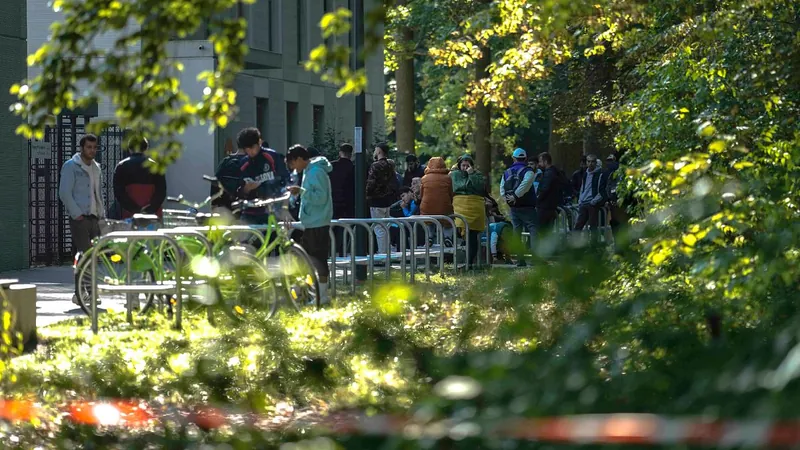
Myanmar's Struggles Intensify: Fighting Persists Amid Earthquake Relief Efforts
2025-04-07
Author: Ming
Despite the announcement of temporary ceasefires by both the military junta and rebel alliances in Myanmar aimed at facilitating earthquake relief, reports indicate that violent clashes are continuing across the nation. The tranquility expected from these ceasefires should have provided a breather for those affected by the devastating earthquake, but the reality is starkly different.
Just a few days after the ceasefire was declared, the military has reportedly conducted a minimum of 14 attacks since April 2nd, as confirmed by the United Nations Human Rights office. In response, the military accused the allied rebel groups of launching offensives, with one rebel faction acknowledging that they engaged in combat to counter military aggression.
Military spokesman Maj. Gen. Zaw Min Tun issued a warning stating, “we will respond if military bases are attacked without reason,” reflecting the tension that persists in the region. While the junta's narrative echoes its intent to remain defensive, the response from the rebels showcases the ongoing volatility. Unfortunately, communication has been poor, as requests for further comments from military representatives have gone unanswered.
On March 28, a powerful 7.7 magnitude earthquake struck Myanmar, with casualties now surpassing 3,500 dead, 5,012 injured, and 210 individuals still unaccounted for. Efforts to recover bodies from the ruins of collapsed structures in major urban areas, particularly Mandalay, are hampered by ongoing rain, which observers fear will further disrupt humanitarian missions.
UN High Commissioner for Human Rights Volker Türk has urgently called for an immediate cessation of military actions so that all aid can focus on the needs created by the earthquake. Still, the reality on the ground reveals a desperate situation: millions were already struggling before the quake, and now the crisis has intensified, creating a dire need for food, shelter, and basic services.
Tom Fletcher, the UN humanitarian chief, emphasized the compounding nature of the crisis, stating, “It’s earthquake, on top of conflict, on top of huge existing need.” He highlighted that even before this disaster, nearly 20 million individuals were already in need of assistance. The UN has reported that efforts to deliver aid remain severely limited due to longstanding military restrictions, with many areas unable to receive necessary support.
As aftershocks continue—one measuring 4.9 on the Richter scale was recorded recently—communities are left to cope with not only the physical destruction but the psychological trauma of living in a conflict-ridden and disaster-stricken environment. The struggle for stability and hope in Myanmar remains a pressing concern, and with both rebellion and natural disaster in play, the region's road to recovery appears to be perilously long.




 Brasil (PT)
Brasil (PT)
 Canada (EN)
Canada (EN)
 Chile (ES)
Chile (ES)
 Česko (CS)
Česko (CS)
 대한민국 (KO)
대한민국 (KO)
 España (ES)
España (ES)
 France (FR)
France (FR)
 Hong Kong (EN)
Hong Kong (EN)
 Italia (IT)
Italia (IT)
 日本 (JA)
日本 (JA)
 Magyarország (HU)
Magyarország (HU)
 Norge (NO)
Norge (NO)
 Polska (PL)
Polska (PL)
 Schweiz (DE)
Schweiz (DE)
 Singapore (EN)
Singapore (EN)
 Sverige (SV)
Sverige (SV)
 Suomi (FI)
Suomi (FI)
 Türkiye (TR)
Türkiye (TR)
 الإمارات العربية المتحدة (AR)
الإمارات العربية المتحدة (AR)